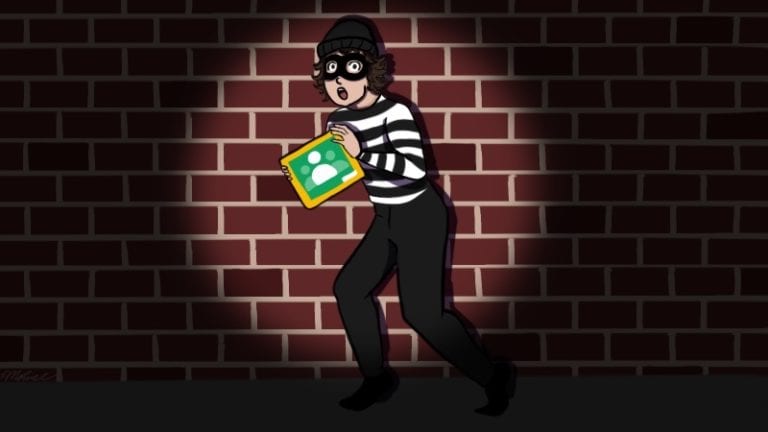I feel like I live in a feedback loop, writing a teacher blog about lessons found on other teacher blogs. And I’m probably not alone. Most of the teachers I know find inspiration on free sites like this one, pay for lessons or units on Teachers Pay Teachers, or turn to their peers in-person for instruction ideas. Some call the act of using another teacher’s idea “stealing.” My department head has coined it “creative acquisition.”
Despite the idea that mimicry is the most sincere form of flattery, it begs the question … when is copying crossing the line? And what are the copyright laws teachers should be aware of?
A recent blog post I wrote reminded me how important it is to give credit where credit is due. I wrote about three AP Lang projects I gave my students at the end of the year. Two were developed in collaboration, but the physical instructions and rubric were created by a colleague. I failed to credit her until another colleague pointed it out, insulting teachers and friends with this oversight.
Besides maintaining good work relationships, here are three reasons why creatively-acquired lesson plans should receive attribution.
1. The boring reason: It’s the LEGAL thing to do!
Although there is some controversy about the legitimacy of selling lesson plans online, the fact remains: copyright infringement laws extend to unpublished works. Lessons, units, worksheets, and the like are a teacher’s intellectual property! Not providing credit to even adapted materials amounts to breaking copyright law. Teachers should know that even under fair use guidelines, there are limitations to the quantity of copies and frequency of use of someone else’s intellectual property for educational purposes.
2. It sets a good example for our students.
In this digital age, information is freely available and easily copied and pasted without proper attribution. Teachers consistently impress upon their students that this behavior is unacceptable; yet, we might be engaging in it ourselves.
“Model the model,” is what my principal always says. So, placing a reference (I like to do it in the header or footer) to the teacher or entity that has provided you with the inspiration—or, let’s be honest, frequently the fully-detailed plan—models to students that referencing resources is the standard for all, and that you hold yourself to that standard. Extra credit to the teacher using proper MLA or APA style.
3. Teachers already get less credit than they deserve.
If we are unwilling to recognize one another for effective instruction, good ideas, and hard work, then why should anyone outside of our profession? In no other profession do people write AND perform for an audience 180 days per year, multiple shows per day, without applause.
Great lessons may not get a standing ovation, but they do leave students craving an encore. The creators of the units, lessons, and assignments that make students yearn for more deserve as much credit as we can give them. It costs nothing to reference their amazing effort. And, if the creator is a personal acquaintance, the reference will increase that teachers’ prestige. It will also give them a positive opinion of you.
Moral of the story, and a lesson I learned (again!), give credit where credit is due. It costs nothing and the return is exponential.

